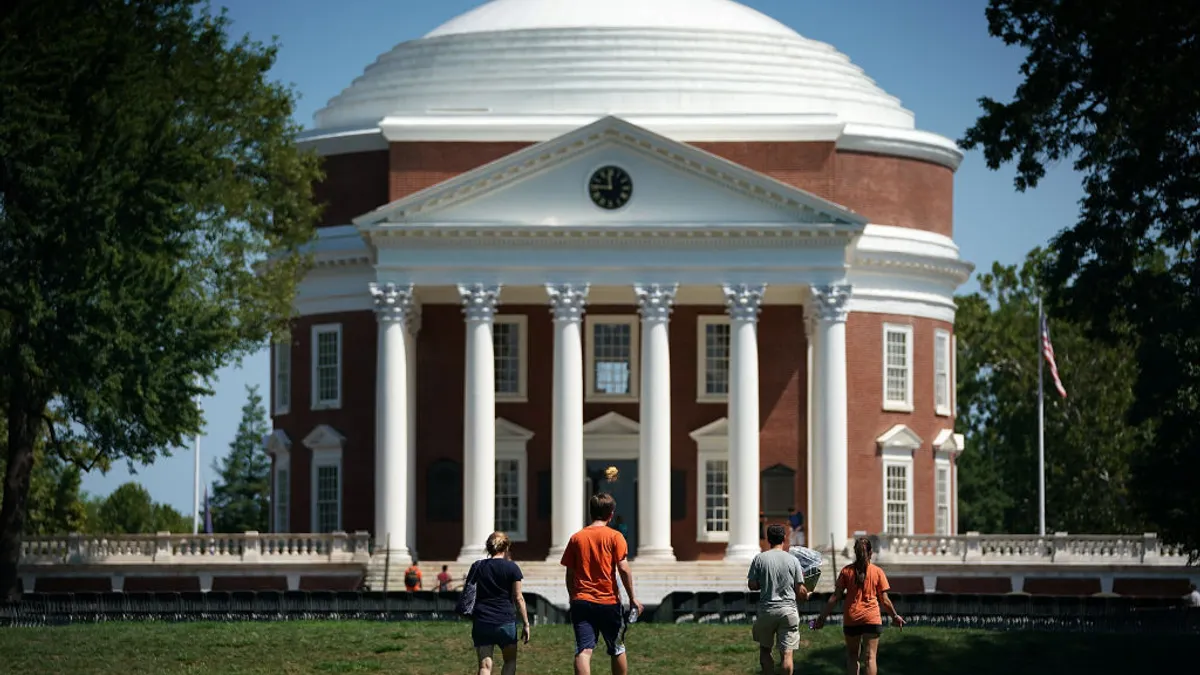Dive Brief:
- Hillary Clinton announced her much-anticipated plan for higher education Monday, with $350 billion in planned spending over 10 years, to be paid for with tax increases for the highest income earners.
- Politico reports that more than half of the proposed spending would go toward grants to states and individual colleges, generally with the expectation of increased local investment.
- The rest of the money would cover the increased federal expense of reducing student loan interest rates and funding innovations and successful initiatives at the college level.
Dive Insight:
Besides proposals legislators are already discussing, Clinton’s plan includes a handful of innovations. It would grow AmeriCorps from 75,000 to 250,000 members, offering greater college cost benefits to volunteers. It would also add GI Bill benefits and other Department of Defense tuition assistance into the calculation that limits for-profit colleges to sourcing no more than 90% of their revenue from federal funds.
Clinton seems to be willing to support innovation that helps nontraditional students get degrees and get credit for badges and credentials that don’t fit into the traditional mold. Her plan supports expanding federal financial aid eligibility to such nontraditional programs. However, many of these proposals may be incorporated into a reauthorization of the Higher Education Act before Clinton or anyone else is elected.











